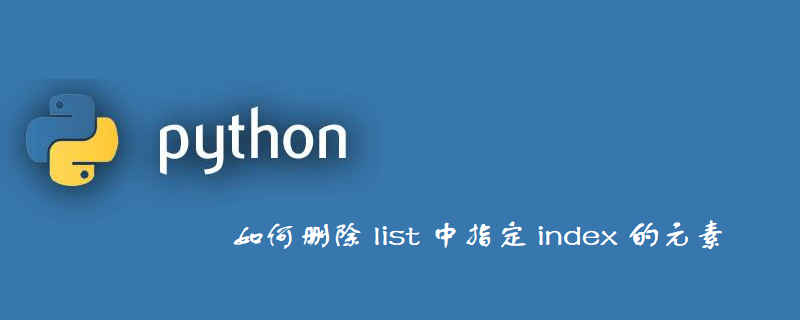Home >Backend Development >Python Tutorial >How to delete the element with specified index in list
How to delete the element with specified index in list
- anonymityOriginal
- 2019-05-25 14:01:2614559browse
There are three ways to delete an element in the list

1.remove: Delete a single element, delete the first element that meets the conditions, delete by value
Example:
>>> str=[1,2,3,4,5,2,6] >>> str.remove(2) >>> str [1, 3, 4, 5, 2, 6]
2.pop: Delete single or multiple elements, delete bitwise (delete based on index)
>>> str=[0,1,2,3,4,5,6] >>> str.pop(1) #pop删除时会返回被删除的元素 >>> str [0, 2, 3, 4, 5, 6] >>> str2=['abc','bcd','dce'] >>> str2.pop(2) 'dce' >>> str2 ['abc', 'bcd']
3.del: It is based on the index (where the element is) position) to delete
Example:
>>> str=[1,2,3,4,5,2,6] >>> del str[1] >>> str [1, 3, 4, 5, 2, 6] >>> str2=['abc','bcd','dce'] >>> del str2[1] >>> str2 ['abc', 'dce']
In addition, del can also delete values within the specified range.
>>> str=[0,1,2,3,4,5,6] >>> del str[2:4] #删除从第2个元素开始,到第4个为止的元素(但是不包括尾部元素) >>> str [0, 1, 4, 5, 6]
del can also delete the entire data object (list, collection, etc.)
>>> str=[0,1,2,3,4,5,6]
>>> del str
>>> str #删除后,找不到对象
Traceback (most recent call last):
File "<pyshell#27>", line 1, in <module>
str
NameError: name 'str' is not definedNote: del deletes the reference (variable) instead of deleting the object (data). The object is collected by the automatic garbage collection mechanism (GC) deleted.
Supplement: Disguised method of deleting elements
s1=(1,2,3,4,5,6)
s2=(2,3,5)
s3=[]
for i in s1:
if i not in s2:
s3.append(i)
print 's1-1:',s1
s1=s3
print 's2:',s2
print 's3:',s3
print 's1-2:',s1The above is the detailed content of How to delete the element with specified index in list. For more information, please follow other related articles on the PHP Chinese website!

